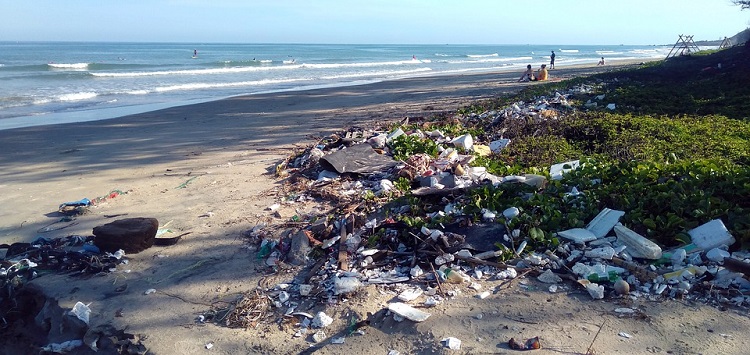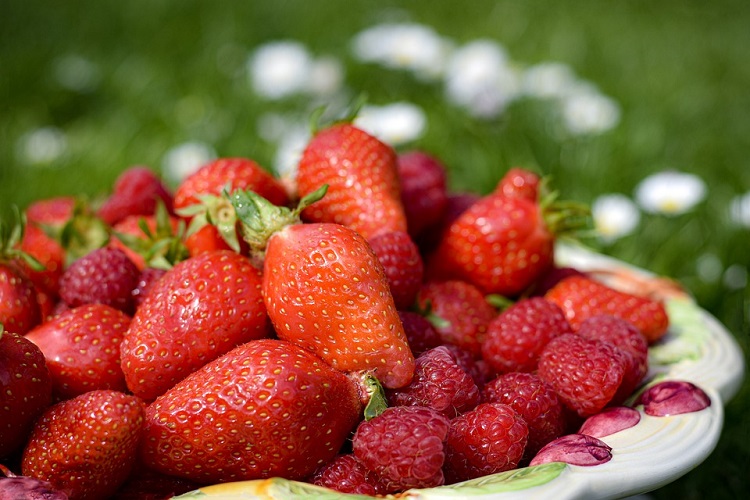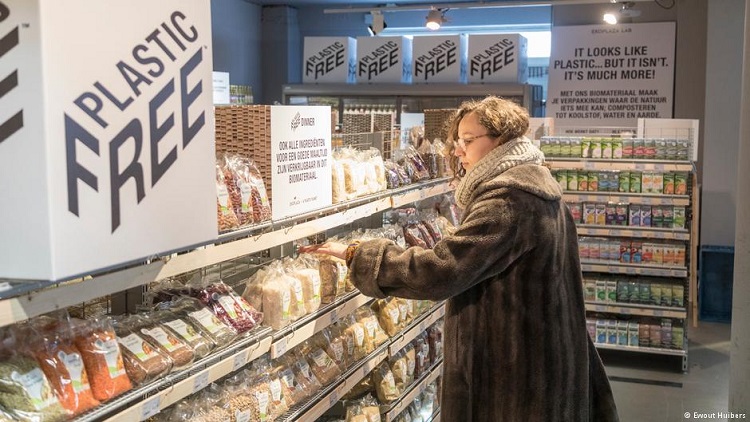This year saw the first ever International Day of Awareness of Food Loss and Waste which drew global attention to this important issue. NRI has been finding solutions for tackling food loss and waste for over a century and is taking this opportunity to share some of its most exciting projects, old and new.
In the third of this series of four short articles for December, NRI’s Dr Parag Acharya and Dr Debbie Rees, discuss plastic packaging and its diametrically opposed roles in reducing food loss and waste, and, if not disposed of properly, increasing plastic pollution.
Dr Parag Acharya is new to NRI and wants to unlock the scientific challenges in designing ‘future-fit product, process, and packaging technologies, by collaborating widely across value chain partners. Building on 14 years of an industrial R&D career in food and biotechnology sectors across North America and Europe, Parag is putting to good use his interest in developing sustainable solutions for plastic pollution, e.g. putting a price on the value of recyclable plastic packaging.
“Packaging is vital to many aspects of the supply chain of the food industry. It helps to increase the products’ shelf life via suitable barrier properties to keep the food fresh for longer, avoiding contamination, and keeping the product intact during handling and distribution. However, packaging alone generates the highest plastic waste (40%) compared to three other major sectors: building and construction (20%), automotive (9%) and electronics (6%). In 2016, per capita plastic consumption was 45kg – that is equivalent to 2.8 billion tons of CO2, which is set to double by 2034.
 Recent studies show that 8 million MT of plastic (32% of plastic packaging) end up in the ocean each year, killing 100 million marine animals and destroying the marine ecosystem. Today, 95% of plastic packaging material value - or $80–120 billion annually - is lost to the economy after a short first use. Another factor is the threat to human health; endocrine-disrupting chemicals, often used to make plastic clear and durable, are associated with various illnesses.
Recent studies show that 8 million MT of plastic (32% of plastic packaging) end up in the ocean each year, killing 100 million marine animals and destroying the marine ecosystem. Today, 95% of plastic packaging material value - or $80–120 billion annually - is lost to the economy after a short first use. Another factor is the threat to human health; endocrine-disrupting chemicals, often used to make plastic clear and durable, are associated with various illnesses.
Various industries using plastic packaging have been embedding sustainable measures in their business models, to use either less plastic or better plastic, with a future aim to use zero plastic. There is a growing consumer demand for alternative bio-based packaging materials that are more sustainable with lower carbon footprint and higher levels of biodegradability.
For an example of companies currently working on bio-based sustainable packaging we can turn to researchers at ETH Zurich and the Swiss Federal Institute of Aquatic Science and Technology (EAWAG) who have established, in an interdisciplinary study, that microorganisms degrade biodegradable bioplastics. This creates completely new opportunities for managing plastics waste in the future. A company called ‘Natural Tableware’ is producing biodegradable packaging from renewable sources, like sugarcane bagasse. BioBag Ltd. and Notpla are two major SME/start-ups active in the area of bio-based packaging besides there are several others listed in BBIA.”
An expert in postharvest technology for perishable crops both in the UK and overseas, Dr Debbie Rees set up the Produce Quality Centre (PQC) in Kent, alongside Dr  Richard Colgan, also of NRI, to undertake research on technologies to retain quality and reduce losses during both short-term handling and long-term storage. Working on a wide range of both temperate and tropical crops, the centre develops and tests technologies for postharvest treatments including packaging, storage during sea and road freight, and long-term static storage. Current projects include in-field cooling to extend storage life of soft fruit (strawberries and raspberries), using ozone to reduce rot, monitoring produce in situ in stores, and the impact of sustainable packaging. Debbie Rees explains: “Food crops are categorised in terms of ‘keeping qualities’, into those that are durable, including grains and nuts, and those that are perishable such as fruit, vegetables and root crops. The handling and storage of fruit, vegetables and root crops in unprocessed form, are particularly challenging because they are living tissues. They are sensitive to the storage environment and will deteriorate more rapidly if exposed to stressful conditions such as extreme atmospheres or temperatures.
Richard Colgan, also of NRI, to undertake research on technologies to retain quality and reduce losses during both short-term handling and long-term storage. Working on a wide range of both temperate and tropical crops, the centre develops and tests technologies for postharvest treatments including packaging, storage during sea and road freight, and long-term static storage. Current projects include in-field cooling to extend storage life of soft fruit (strawberries and raspberries), using ozone to reduce rot, monitoring produce in situ in stores, and the impact of sustainable packaging. Debbie Rees explains: “Food crops are categorised in terms of ‘keeping qualities’, into those that are durable, including grains and nuts, and those that are perishable such as fruit, vegetables and root crops. The handling and storage of fruit, vegetables and root crops in unprocessed form, are particularly challenging because they are living tissues. They are sensitive to the storage environment and will deteriorate more rapidly if exposed to stressful conditions such as extreme atmospheres or temperatures.
 In terms of packaging, while the need to reduce plastic pollution, as discussed by Parag Acharya above, is undeniable, it is also important that we should do this without increasing food loss. With strong public opinion against plastic pollution, there are several examples in the UK where retailers have moved to reduce plastic use and have ended up increasing food waste.
In terms of packaging, while the need to reduce plastic pollution, as discussed by Parag Acharya above, is undeniable, it is also important that we should do this without increasing food loss. With strong public opinion against plastic pollution, there are several examples in the UK where retailers have moved to reduce plastic use and have ended up increasing food waste.
For example, one supermarket chain was very quick to start selling cucumbers without plastic sleeves while another major retailer, quickly declared that they would have plastic free aisles including removing the use of plastic bags for bananas. In both cases the companies have had to reverse their initiatives in the light of increase in waste and customer dissatisfaction.
The PQC is working with packaging manufacturers (BioFreshPak), to test the impact of replacing non-compostable with compostable plastic films both in the UK and overseas and has joined a new consortium, Nextloopp, that is working to set up the technology and infrastructure for recycling food grade polypropylene (one of the most widely used plastics for food packaging). We are also working with companies to test new biobased plastics and we expect this area of work to expand over the next few years.”
To find out more about:

